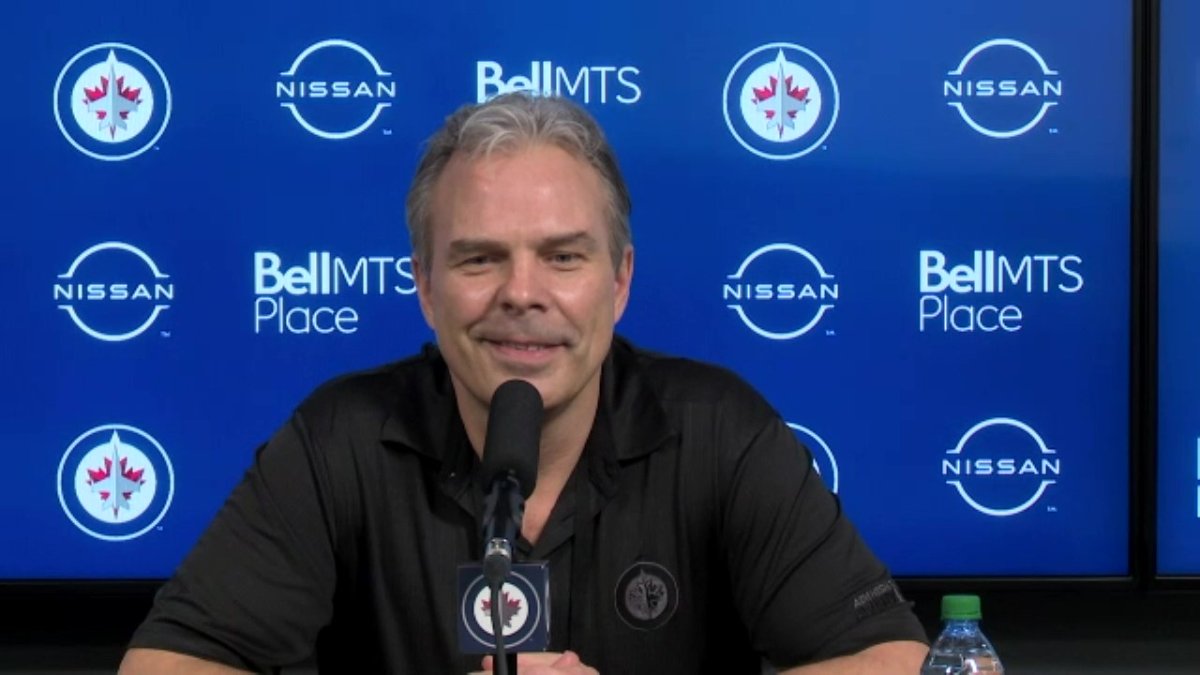There was a fair amount to unpack as the Winnipeg Jets finished up their training camp at Bell MTS Place on Wednesday afternoon in their final on-ice preparation for the home and season opener versus the Calgary Flames.

The broadcast will be heard on 680 CJOB starting at 7 p.m. with Paul Edmonds and Jamie Thomas following the pregame show at 5 p.m.
As expected, former LA King forward Trevor Lewis did come to an agreement on a one year contract for US$750,000, bringing some assets to the mix in terms of defensive prowess, penalty killing, experience and two Stanley Cup rings.
Reporters learned that COVID Protocol Related Absence (CPRA) could be added to the likes of UBI and LBI as an explanation why a player wasn’t skating in practice or might not be in the lineup on any given day or night.
That terminology was put into play Wednesday as an explanation for Nikolaj Ehlers not practicing. This should not be interpreted that the Dashing Dane has tested positive for COVID-19. He could still play Thursday night against the Flames.
Jets General Manager Kevin Cheveldayoff says it’s just one example of the NHL erring on the side of caution when it comes to avoiding any opportunity for the virus to spread. “Say a player comes to the rink and has the sniffles. He’s going to get temperature-checked, tested, and then sent home. But then there’s a protocol that’s going to have to be followed after that and there’s not going to be a time frame necessarily — it’s all going to be testing related.”
Cheveldayoff also delivered a tutorial on the salary cap stickhandling that was involved in naming an opening night roster. Get a coffee and find a comfortable place to sit, because this will take some time: “The rosters were put in yesterday (Tuesday) and the league goes through a forensic procedure on it to make sure what you’re submitting is cap compliant,” Cheveldayoff began. “We put Dominic Toninato on LTIR (Long Term Injured Reserve) when he presented at training camp and didn’t pass medicals. As a result, he is undergoing further testing.”
So that’s how the Jets shaved US$700,000 from their payroll initially. But wait, there’s more. A lot more.
“Before putting a player on LTIR, you get as close to the cap (maximum) as you can,” Cheveldayoff continued. “Some of that involves sending players to different places. This year we have a taxi squad situation that we’ve never had before.”

So some of those different moves to different places included Mathieu Perreault and his US$4.125-million salary being placed on waivers. And this is where it gets interesting — and possibly confusing for anyone whose last name isn’t Einstein. Or Simmons, as in Jets Vice President and Assistant GM, Larry Simmons.
So with that seven-figure saving in hand. Cheveldayoff and head coach Paul Maurice then sat down with Perreault and crunched the numbers to explain what was happening, and why. “It’s not a fun conversation,” admitted the Jets GM. “But in the same token, that’s the business side that needed to transpire.”
Cheveldayoff said Perreault was fully on board and said he’d do whatever he could to help the team make sure it could achieve the most roster flexibility as possible. “If we couldn’t have gotten to making the roster moves that we had, we would not have had Bryan Little’s full LTI money,” said Cheveldayoff. “And in fact, we might have been hamstrung in order to play with only a 23-man roster and not have that cap flexibility that we did.”





Comments